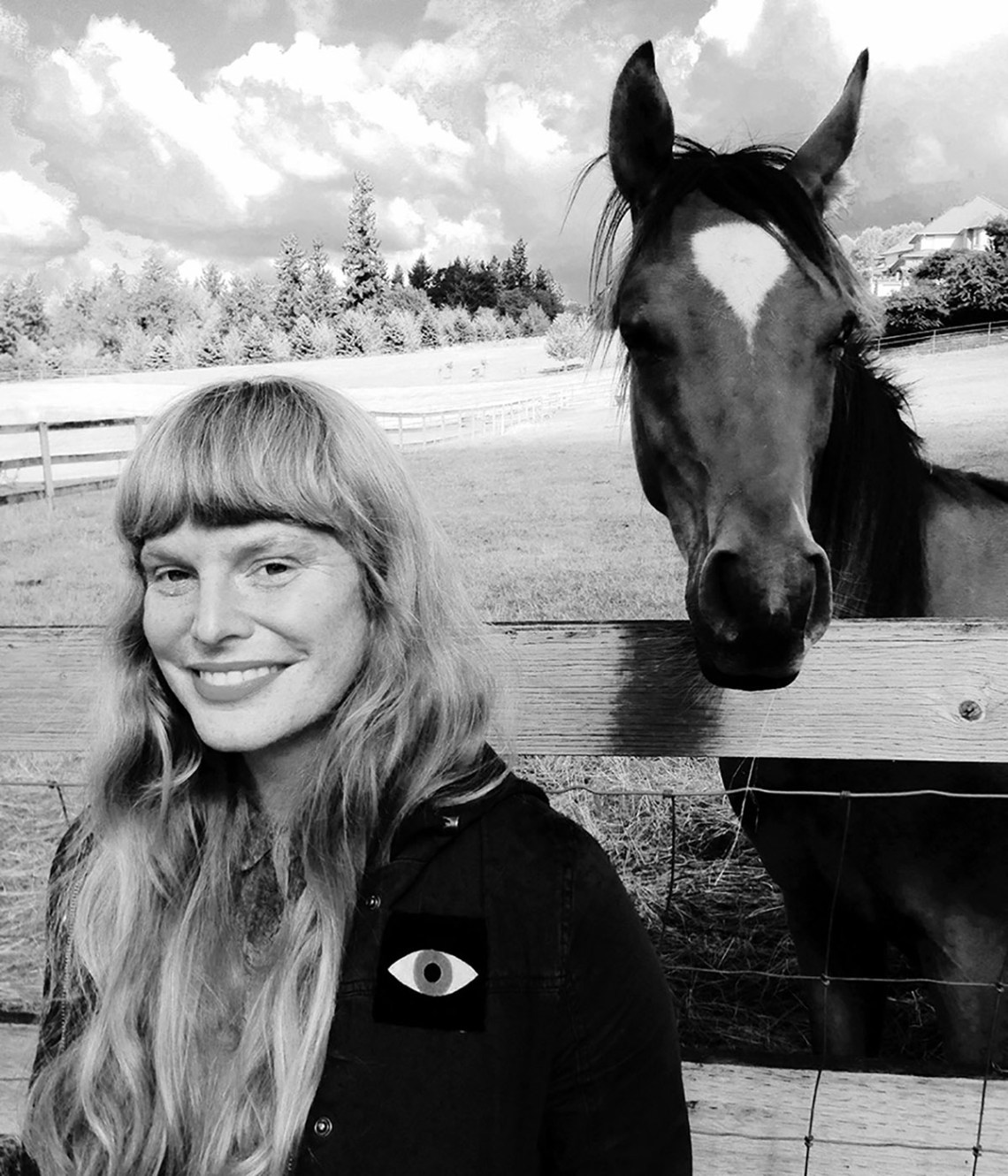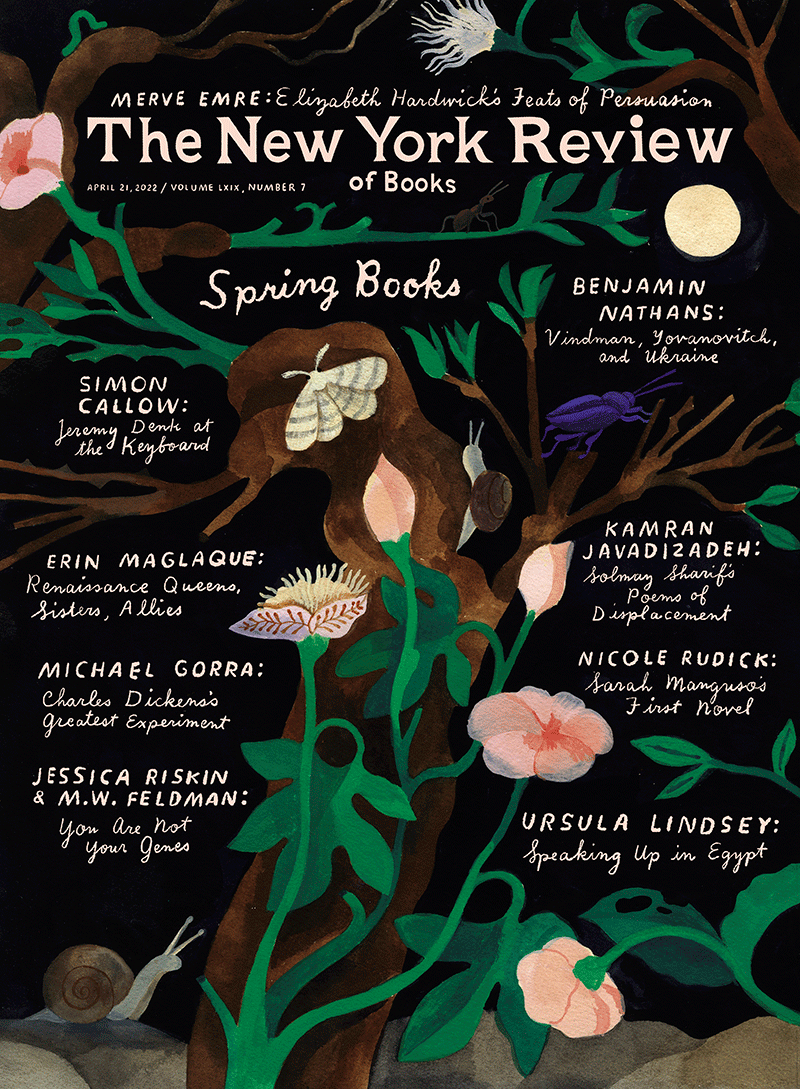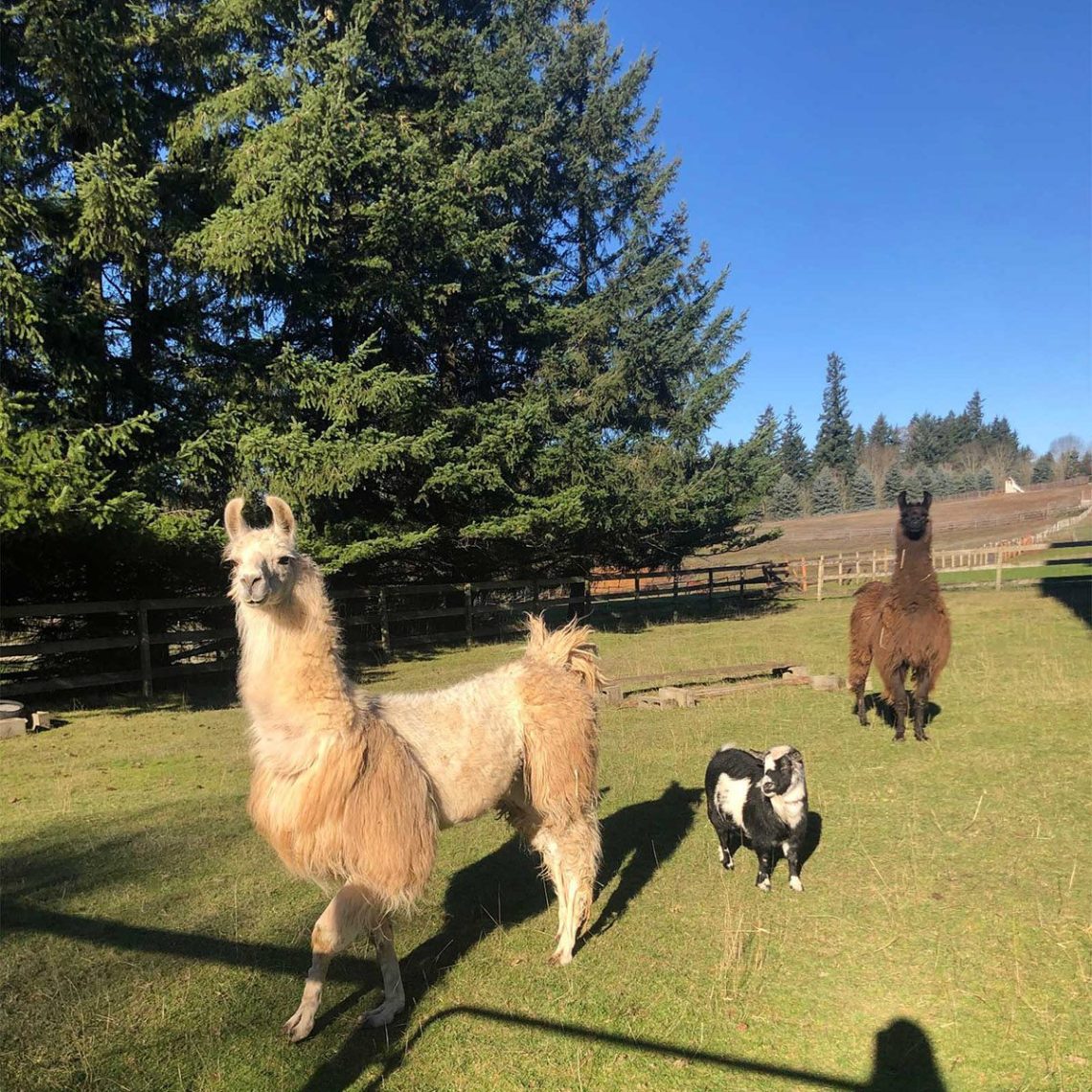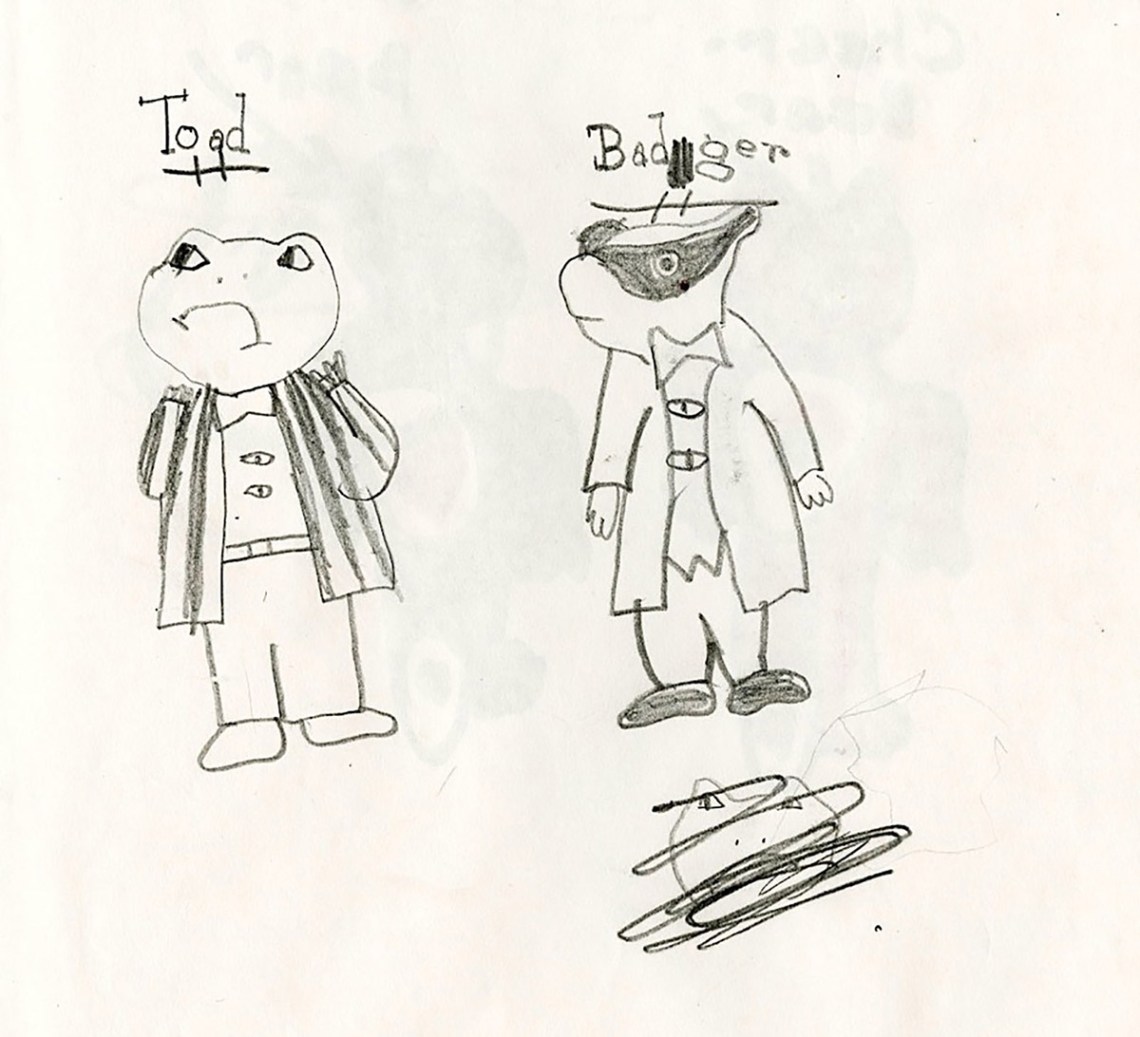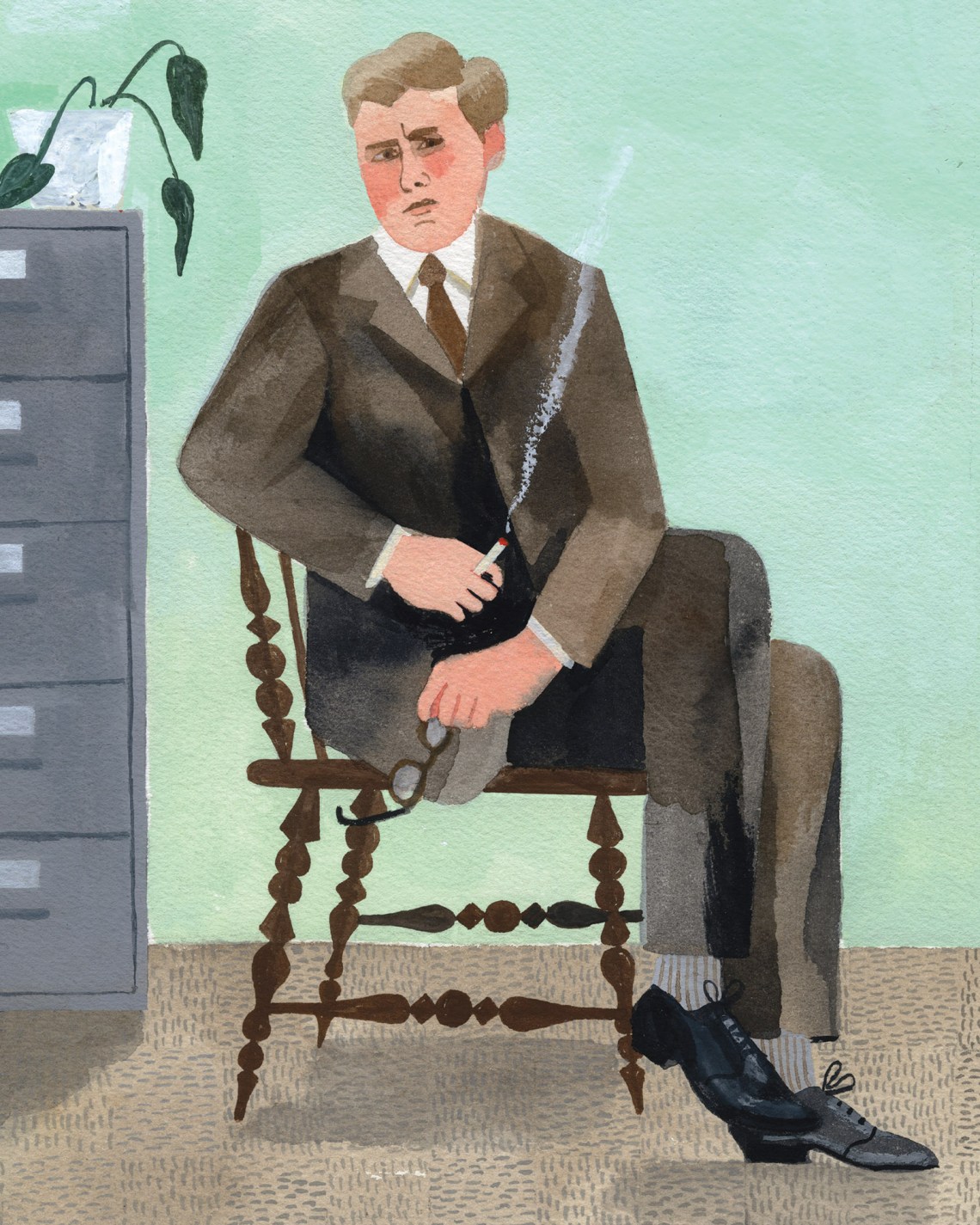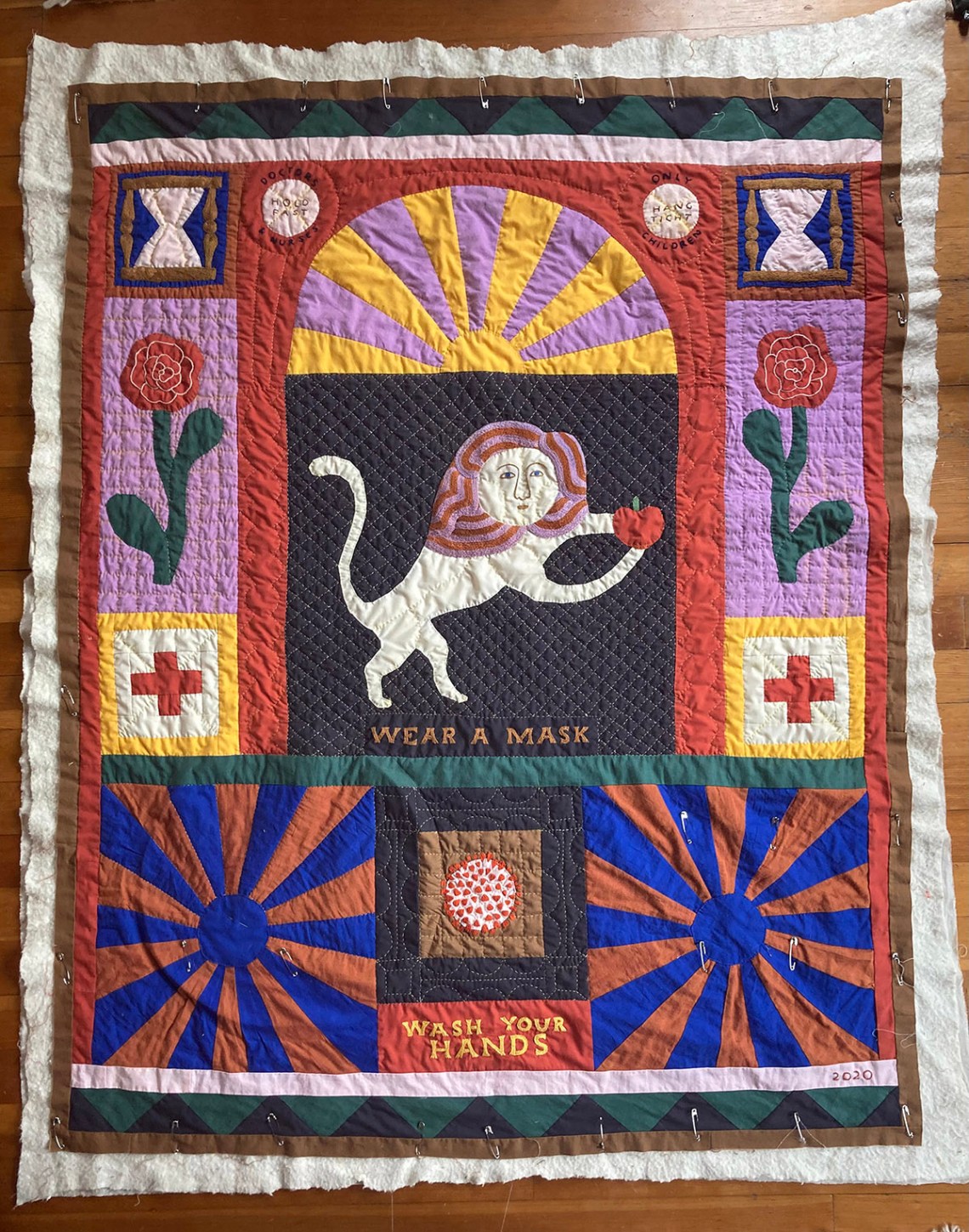This article is part of a regular series of conversations with the Review’s contributors; read past ones here and sign up for our email newsletter to get them delivered to your inbox each week.
The Canadian-born author and illustrator Carson Ellis lives on a farm outside of Portland, Oregon. The natural world, the outdoors, and bugs, plants, llamas, and gardens have long inspired her work, which prompted the Review to ask Ellis to illustrate the cover of our Spring Books issue.
Ellis, a Caldecott honoree for her 2016 children’s book Du Is Tak?, is part of a community of picture-book makers that includes Mac Barnett, Sophie Blackall, Jon Klassen, Lemony Snicket, and Jon Scieszka. In 2011 Ellis hand-lettered and illustrated a picture-book manifesto written by Barnett that declared, “Picture Books are a form, not a genre. Good design fosters good reading. Picture books look best when their covers face outward.” And: “Even books meant to put kids to sleep should give them strange dreams.”
Ellis’s art and hand-drawn text, for both children and adults, realizes those ideals. Her work recalls Amish samplers, sailors’ valentines, flags, and heraldry—monograms and images that unfold in layers, gradually revealing their meaning and depth. There’s a readerly and historical structure to her style: her hand-lettered posters, for example, demonstrate an extensive knowledge of type and graphic design. She also whittles, quilts, and knits. Last week we corresponded via e-mail as the daffodils were coming up in Washington Square Park and an April snowfall was keeping her kids home in Portland.
Leanne Shapton: Your cover was the second of our special-issue covers for which we asked an illustrator to design and hand-letter the whole thing. One of the reasons I asked you to do it is that I love your hand-lettering. Have you always been drawn to handmade letterforms? Did you learn calligraphy as a kid?
Carson Ellis: I have always been drawn to hand-lettering. My mom got me a calligraphy set when I was in middle school. It came with a book of fonts and I practiced them all. I think my first paying gig was writing the names of all the band kids in calligraphy on some certificates they were given at the end of eighth grade. I chose Blackletter, which is a medieval script, because I loved how intense it is. (Still do.)
There’s also a lot of careful serif lettering in my childhood sketchbooks.
Where did you grow up and amid what kinds of landscapes?
I grew up in the suburbs of New York, in Mount Kisco. Until I was seven I lived in the rented carriage house of an old estate called Dellwood. It had been the country home of a Vanderbilt and a Hammond—I think John Hammond the famous record producer spent part of his childhood there—but the estate was decrepit by the time my family moved there in the 1970s.
Our house was a long loft above a garage where I guess the carriages would’ve once been kept and repaired. Some other hippies lived next door in the farmhouse, and an old caretaker, whom I was never to disturb, lived on the property, too. Next to our house was a massive crumbling silo that we were also supposed to stay away from. Stretching out behind the house for what seemed like miles—it may have actually been miles—were woods and fields where I roamed freely as a kid.
When I was seven, developers bought the property, kicked us out, and razed the buildings. We moved to a typical suburban neighborhood, and, honestly, I never got over it. The housing development fell through; it was never built. For years it was an abandoned construction site where I hung out as a teenager and mournfully smoked weed.
Various creatures feature on your cover, but not your llamas. What are they like?
Llamas are mysterious. Years ago, before we bought this little farm, we were looking at it with the listing agent. I saw a couple of llamas in the pasture and he told me they were actually his. He was friends with the woman who was selling this farm and she was boarding them for him. He was like, “Do you want them? If you buy this farm, you can just have them.” I didn’t know anything about llamas and said, “Is there any reason I wouldn’t want them?” He thought for a bit and said, “No.”
That kind of sums up llamas. They are incredibly resilient animals, native to the Andes, built to withstand freezing winters on very little food. They don’t need much, and those two llamas, the listing-agent llamas, were so aloof that they barely seemed domesticated. They were like giant deer who would miraculously eat out of my hand.
Those original two—Danny and Sugar—both got old and died this year. I didn’t realize I cared so much about them until they died. We had such a tenuous relationship. But it turned out I loved them a lot. I was heartbroken.
Advertisement
Currently I have one llama, Dolly. She’s incredibly old. She’s supposed to guard my goats from coyotes—that’s why a lot of people keep llamas around here. They’re fierce guardians. But Dolly just sits under a tree, gazing into the middle distance all day. I think she might even be deaf.
Where did the idea of the nocturnal scene for the artwork come from?
One night last spring I was putting my chickens in. I had a headlamp on and, as it swept across the wet grass, I caught a glimpse of a big beetle in that blinding beam that creates deep, wildly shifting shadows all around the thing you’re looking at. I forgot about the chickens and started walking slowly around the yard in the dark looking for more things. There were bugs, a newt, and earthworms that would shoot back into their holes lightning fast when the light passed over them. I didn’t know worms lived in holes or that they could move that fast.
I’ve always been drawn to the microcosmic worlds of bugs and tiny creatures; the scenes you discover when you turn over a log or look into a tide pool. It’s a motif I’ve been exploring since I was a kid and I just keep coming back to it. I knew I wanted to paint a springtime scene for this cover—something that would be about all the growth and reawakening that’s suddenly everywhere you look in the spring. But I didn’t want it to feel sentimental. I wanted it to feel like nature doing its thing regardless of the human gaze, so I set it at night.
Your last piece for the Review was a portrait of John le Carré. Are you a fan of his work? What kinds of stories, fiction or nonfiction, have you been drawn to lately?
Fan might be a strong word, but I like le Carré. My husband loves him; the art for that illustration is sitting next to his computer. I would not have told you I liked spy novels before I listened to the audiobook version of The Spy Who Came in from the Cold (1963), but it wasn’t what I expected. It was bleak and funny and smart. And it’s hard not to like George Smiley.
In general, I like period novels or old novels, mostly because I’m always looking for windows into the past. I like nineteenth-century Russian novels. I’m rereading The Brothers Karamazov right now, mostly because I’ve been telling people it’s one of my favorite books for twenty years and I wanted to make sure that’s still true. (It is!) I just read Peter Stark’s excellent page-turner, Astoria (2014), a history of the expedition that established the first American settlement in Oregon. And I love Kazuo Ishiguro. I’m going to reread his 2015 fantasy The Buried Giant next.
How has the quilting you’ve been doing affected your design sense?
I’m currently at the hand-quilting stage of a quilt for the first time. I’ve been hand-quilting for almost two years and I’m only about 75 percent done. It’s incredibly laborious but I love it. I love a good repetitive art project that takes forever and that you can set down and pick back up as many times as you want until it’s done.
This quilt is pictorial—there’s a lion holding an apple and hourglasses in the corners—lots of appliqué. It’s very graphic and colorful. I’m not sure how it fits into my practice, but it doesn’t not feel like illustration. I work in so many different mediums: wood, embroidery…I even think of my garden as a medium. They all feel like ways to explore design or storytelling or how those two things intersect. Everything informs everything else.

